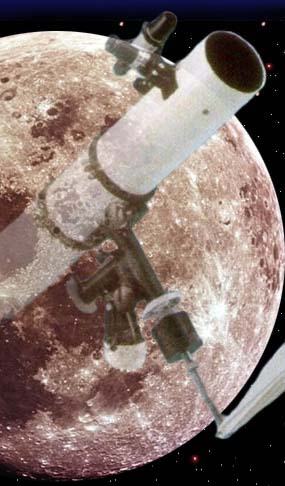will be protected against radio interference from the Earth and satellites orbiting it

Hoping to listen to the frequencies that the universe transmits and which until now could not be listened to, a group of scientists began recommending to the government to set up an array of radio telescopes on the "dark" side of the moon.
Such an observatory, which will be protected from the radio noise from the Earth by means of the lunar soil, will be able to listen to frequencies that, due to the interference, cannot be heard from the Earth itself or even from orbit around it. Moreover, it will also be possible to listen to such low radio frequencies that are normally absorbed by the Earth's atmosphere. Astronomers are investigating the feasibility of the proposal, which they believe could be built remotely using robotic equipment and also operate automatically. "This will give us a new look at the universe," says Yuki David Takahashi, an astronomer at the University of Glasgow in Scotland, on a website set up to provide support for the establishment of the lunar observatory. "We are all like wearing red sunglasses, and when we take them off we will discover that there are beautiful red flowers in the world, apples, red beetles, and more."
The lunar observatory will be able to give us a look at new and unknown phenomena as if we have a new sense, we will be able to observe high redshift galaxies, says Takahashi. Claudio Maccone from the Center for Astronomy in Turin, believes that the observatory can be built within 15 years, and therefore NASA, the European Space Agency or major government institutions must provide the billions of dollars needed for this. "I believe they can be built," Makona told New Scientist magazine. He should soon write a report with a proposal that will be addressed to the International Academy of Astronomy which will meet in about ten months.
But time is of the essence, as more space-observing satellites at ever-increasing distances from Earth pose a threat to the radio oasis on the far side of the moon, McConnell says.
Two possible sites on the moon are the craters Daedalus and Saha, each tens of kilometers in diameter. In particular, the scientists believe, it will be possible to use these systems to search for life outside the earth. A ST-like project may flourish in an observatory located on the surface of the moon. Perhaps the most important question - does life exist elsewhere in the universe - is being denied to us due to the radio interference on Earth.
